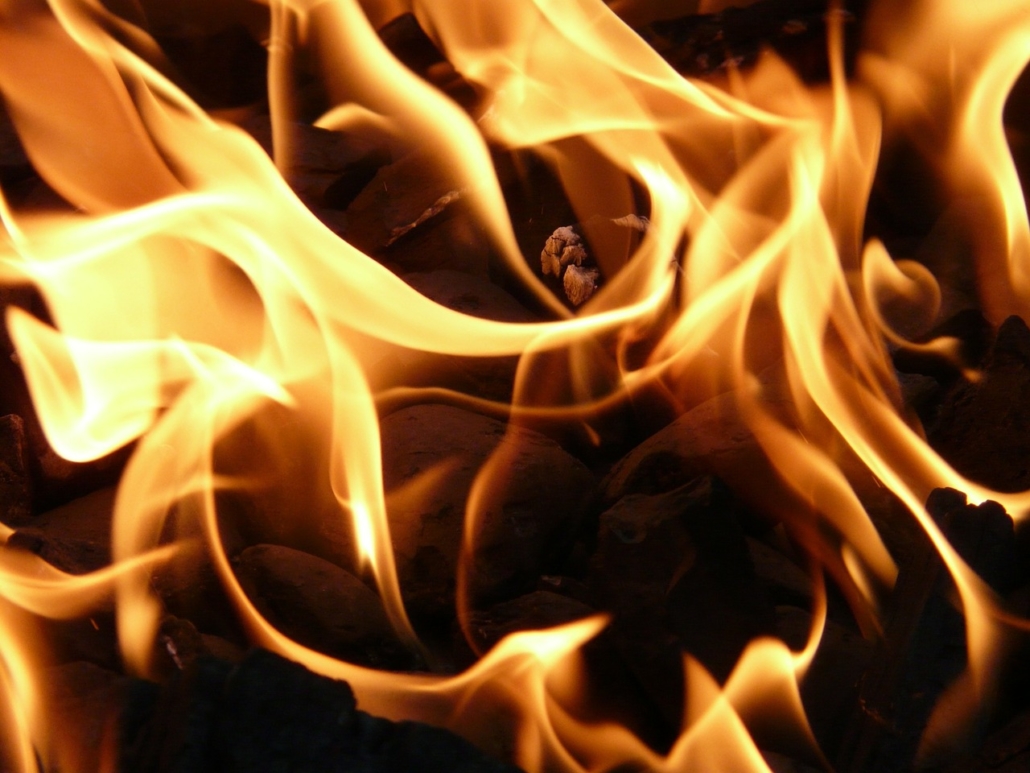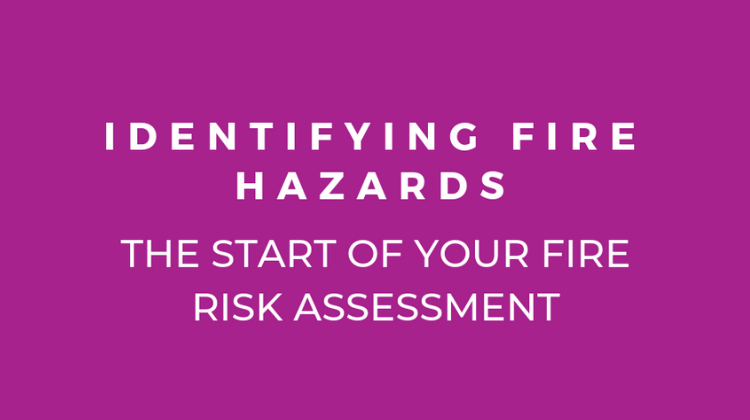Identifying Fire Hazards: The Start of Your Fire Risk Assessment
Fire hazards are present in every business, big or small.
And, you need to know how to identify them when you are completing your fire risk assessments.

But what makes something a fire hazard?
Read this post to find out the answer to this question as well as simple fire safety tips you can use in your workplace.
Without further ado, let us begin with a bit of background to fire safety.
Fire Safety in the UK

The fire safety statistics for 2016/17 show that emergency services attended over 175,000 fires in the UK.
As a result, there were over 250 fatalities.
Without proper care and precautions fires are easily started with the potential for deadly consequences.
Which is why identifying the fire hazards in your workplace is important.
The Fire Triangle
Fire hazards are given the definition of “anything that increases the chances of a fire occurring”.
But, what does this really mean?
Well, fire requires 3 things:
- Oxygen
- Fuel
- Heat (sources of ignition)
This is often represented by the fire triangle shown opposite.
Lose either oxygen, fuel or heat and a fire will die out.
Therefore, fire safety involves restricting 1 of these 3 things.
As a result, a fire hazard can be defined as either a fuel or a source of ignition.
Here are some common workplace examples.
Common Examples of Workplace Fire Hazards
Sources of ignition
- Cigarettes, matches and lighters
- Overloaded electrical sockets
- Open gas flames
- Ovens and hotplates
- Deep fat fryers
- Faulty or damaged electrical equipment
Sources of fuel
- Wood
- Paper
- Loose packaging material
- Waste rubbish
- Furniture
- Flammable liquids and vapours
With these in mind, identifying hazards in the workplace becomes easy.
Identifying Fire Hazards
Using the examples provided above can give you an idea of the fire safety risks you may face in your business.
But to discover further risks, ask yourself these two questions:
- What sorts of things can easily catch fire or burn?
- What things generate a spark/heat?
These questions will help you to discover the fire hazards faced in your workplace.
Consequently, you must put adequate measures in place to mitigate these risks.
Evaluating Your Fire Hazards
When assessing your risks consider the following questions:
- Are any sources of ignition and sources of fuel near one another?
- What can we do to reduce the risk of this hazard? Can we eliminate the risk altogether?
- Who is at risk in this situation? (consider everyone that encounters the hazard(s))
- Do we need to store as much of this dangerous substance as we are?
- Have we got the correct equipment to manage a fire should it break out?
The answers to these questions need to be provided in your risk assessment where you set out the preventative measures you will put in place.
Furthermore, you’ll need to record your procedures, plan them out and then inform employees of their existence.
Find a template hereor if check out our fire marshal training.
Before we move on to some simple fire safety tips, we’ll discuss a special category of fire hazards…
Dangerous Substances
Dangerous substances are “any substances used or present at work that could, if not properly controlled, cause harm to people as a result of a fire or explosion or corrosion of metal”
Often, dangerous substances must comply with stricter regulations because of their higher risk.
Examples include:

- Chemicals
- Petrol
- Paint thinners
- Welding gases
- Grease
- Dust from wood, flour and sugar
Significant time should be taken analysing the possible risks and precautions that need to be taken.
For more information on dangerous substances, read the DSEAR Regulations 2002.
Next up, simple tips to improve fire safety.
10 Tips for Preventing Fire Hazards
- Keep potential fuels and heat sources apart
- Maintain a tidy workplace
- Keep fire doors shut and clear
- Provide adequate fire safety equipment
- Carry out regular fire safety checks
- Store the minimum amount of dangerous substances
- Do not overload electrical sockets
- Fix faulty electrical equipment
- Regularly discuss fire safety with your staff
- Get the correct fire safety signs
Now, Let’s bring everything together with a case study.
Fire hazards and the consequences – Case Study
In this example, a restaurant regularly threw out their used cardboard boxes and left them to pile up outside.
However, when an employee went outside to smoke, they dropped their cigarette butt onto the floor.
Unfortunately, the butt was still lit, and the cardboard set alight.
The resultant fire caused severe damage to the restaurant and a full evacuation.

What were the consequences?
- The cost of repairing the building
- Endangering the lives of staff and customers
- Loss of reputation
- Potential prosecution
- Loss of income
What should have been done?
Firstly, the hazards should have been identified.
i.e.
Source of Ignition – Cigarette end
Source of Fuel – Waste cardboard box
Then, after completing a risk assessment, appropriate measures should have been taken to avoid or minimise the risk.
i.e
- The creation of a smoking area away from potential fuels.
- Disposal of waste cardboard away from sources of ignition.
- Fire safety training for employees
But, what parts of the law actually require fire risks to be assessed?
Fire Safety Law
Fire safety in the workplace is governed by the Regulatory Reform (Fire Safety) Order 2005.
This states that a responsible person (an employer or any other person in control of part of the premises) must:
Make a suitable and sufficient assessment of the risks to which relevant persons are exposed for the purpose of identifying the general fire precautions he/she needs to take to comply with the requirements and prohibitions imposed by or under this Order.
It is plain to see that assessing your fire hazards as part of your fire risk assessment is a legal obligation.
Key Tip: Set aside time every month to discuss fire safety matters with your employees and whether they have identified any new problems.
If you neglect the law, you are leaving yourself open to legal implications like the company below.
Fire safety breach by Sheffield hotel
A Sheffield hotel owner was jailed for breaching the fire safety legislation.
Responding to a fire, inspectors found: no working fire alarms; an unsuitable risk assessment; inadequate amounts of fire detectors; no emergency lighting and insufficient levels of training for hotel staff.
What should the hotel have done?
- Carry out risk assessments and regularly revise them.
- Maintain and check of fire detectors and alarms.
- Install Emergency lighting in suitable areas.
- Provide basic fire safety training for all employees.
Read the full article here.
Conclusion
Fire hazard identification is extremely important for your business.
Without it, you won’t be able to complete a risk assessment, therefore, you’ll be unable to put the necessary measures in place to prevent fires from starting.
However, if you manage to stay on top of this, you’ll stay on the right side of the law.
What fire hazards have you noticed in your workplace? Let us know in the comments!


